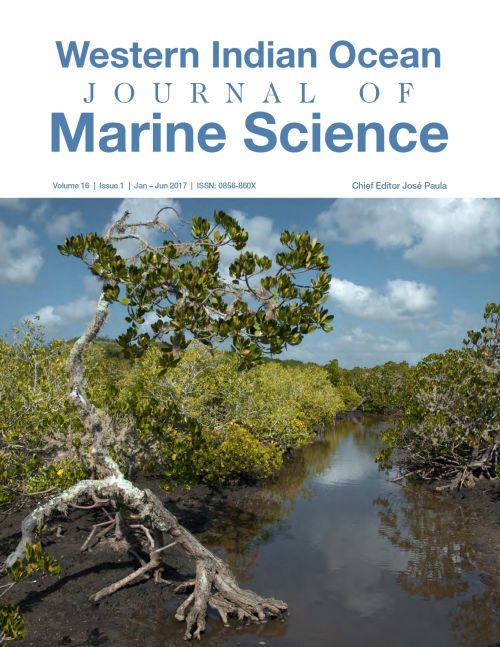Main Article Content
Mangrove change detection, structure and condition in a protected area of eastern Africa: the case of Quirimbas National Park, Mozambique
Abstract
Given the high dependence of coastal communities on natural resources, mangrove conservation is a challenge in Mozambique, even within several types of marine protected areas. This study assesses the condition of a mangrove forest in the Quirimbas National Park (QNP), where use by the local community is allowed with restrictions. Satellite imagery (1991 – 2013) and ground forest assessment were used to assess forest structure, conservation status, and regeneration potential of the forest. Random 10x10 m quadrats were set within the forest, for species identification, diameter at breast height (DBH), height measurement, assessment of levels of cut, and quality of the main pole. Young individuals were also counted to assess the regeneration potential.
The overall mangrove cover has increased by 10% from 11 244 ha to 12 348 ha between 1991 and 2013. The forest is dominated by Ceriops tagal and Rhizophora muctonata, but other 4 species were also identified (Avicennia marina, Bruguiera gymnorhiza, Sonneratia alba, and Xylocarpus granatum). Trees tend to be small in height and width (mean: 5.96 ±3.2 m and 7.69 ± 4.5 cm respectively), with a total density of 572 trees/ha. Statistical analysis indicated distinct patterns of transformation; the south with higher densities of crooked poles (p< 0.05) (369 trees/ha), and the north with higher density of stumps (p< 0.05) (250 stumps/ha). The north and south parts of the park also had higher densities of crooked than straight and semi-straight poles (p< 0.05). Natural regeneration was observed with adequate seedling/sapling density of between 36 733 to 126 133 saplings/ha. The results indicate that, despite being a protected area, the mangroves of the QNP are subject to pressure from the community, reflected in the loss of certain areas areas, and high density of cut trees and stumps. Appropriate measures are necessary to effectively protect these mangroves and meet conservation objectives.






